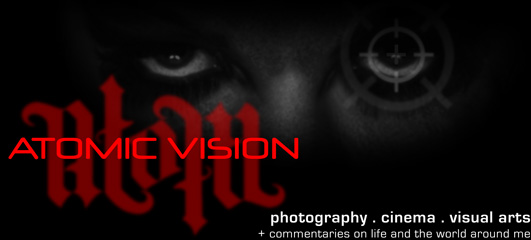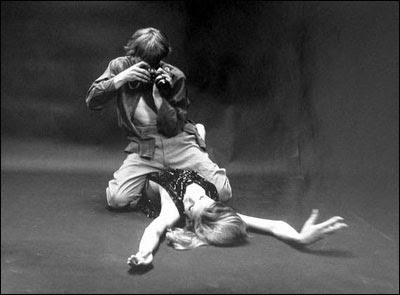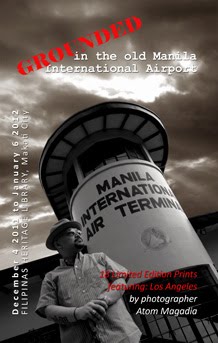Michelangelo Antonioni’s “Blowup” is a cinematic masterpiece that has withstood the test of time. It is as relevant now as it was in 1966. It has inspired and influenced countless filmmakers, as well as sparked heated debates among movie aficionados. It is a very potent work of art that either agitates or aggravates its viewers into spontaneous applause or inordinate disdain.
I remember attending a special screening of “Blowup” with my wife Anne eight years ago, in the Los Angeles County Museum of Art. While we were visiting the museum, I saw an announcement of the screening. I literally pushed Anne into the auditorium, eager to finally see the movie on the ‘big screen.’ We were newly married then and I really did not know how she will react to the film’s ending.

Antonioni directing the "fashion shoot" sequence.
I was still a teenager the first time I saw “Blowup,” and I thought it was an absolute work of genius. The second time I saw it, I was in college and I thought it was clever. The third to the nth time I saw the movie, I was in film school and my feelings toward it vacillated from admiration to revulsion. By the time I was seated next to my wife in the LACMA Theater, I was somewhat indifferent. Pathetic as it may sound, I was basically watching it again to relish the ‘photography sequences’ (I was not yet a career photographer then) – It is, after all, the quintessential “photographer film.”
As the crowd stood up from their seats to give the film a standing ovation, Anne looked at me quizzically with the most amusing “what the F___” expression I will never forget. She hated the film! She understood what Antonioni was trying to do, but she hated the movie for manipulating her – taking her for a ride. Anne believes that the film is too artificial, too contrived even to be considered clever.

















